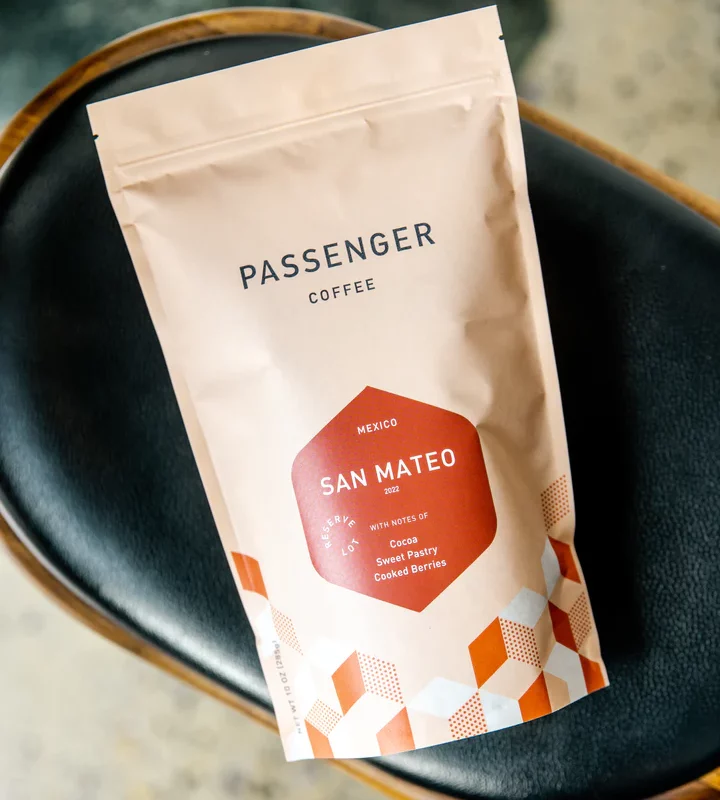
About this Coffee
Sweet pastry, vanilla, and caramel on the nose introduce an inviting cup with cooked berry sweetness and a deeply satisfying finish of milk chocolate, wafer cookie, and mild lemon.
This field blend of the bourbon and typica varieties was purchased from smallholder farms located near the town of San Mateo Yoloxochitlán in Oaxaca, Mexico. While huge challenges remain for smallholder coffee farmers throughout Mexico, deeply pleasing coffees like this provide ample motivation for continued investment in the country’s beautiful and historically significant producing regions.
This new Reserve Lot, from a community of producers who live near the town of San Mateo Yoloxochitlán, continues Passenger’s recent exploration of coffees from the Cañada region of Oaxaca in southern Mexico. Oaxaca borders other storied growing regions of Mexico in such states as Chiapas, and Veracruz, through which coffee was first introduced to Mexico with the arrival of European colonizers in the 18th century. Mexico’s coffee story, from there, is truly one of ‘boom and bust’, from which it still hasn’t fully recovered today. It’s also a story that lends valuable context to the notable quality of this offering from San Mateo and specialty producers in Mexico writ large.
After the arrival of European colonists, foreign investment in large swaths of land in Mexico continued to increase through the mid-1800’s and many of the indigenous small landholders growing coffee were forced further into more remote and mountainous regions. It wasn’t until after the Mexican Revolution at the turn of the twentieth century that agrarian land reforms began to return large plots of farmland to indigenous laborers, beginning a trend that would reclaim state ownership of the coffee sector, most notably with the foundation of INMECAFE in 1959. INMECAFE was a governmental organization that brought the production and export of coffee under state control, which limited the powerful influence of private exporters and ‘coyotes’ (predatory traders that travel throughout producing regions offering low prices, in cash, for coffee that is ultimately sold to other traders at a profit). Additionally, INMECAFE provided technical assistance and critical financing to a growing number of collective coffee farmer groups, eager to join the trade under this new arrangement. By the early 1980’s, INMECAFE had attracted more than 80% of Mexico’s smallholder producers. The windfall of all of these post-revolution changes was a resurgence in coffee production that would lead Mexico to become the fourth largest producer of coffee in the world by the early 1990’s.
But despite these successes, a loosening of coffee price controls by the ICO (International Coffee Organization), pressure from various international financial organizations, and a new presidential administration that supported broader free market economic goals led to the dissolution of INMECAFE in 1993. Now lacking direct government support, and struggling to find buyers, coffee farmers were forced to adapt to the new market conditions where private exporters and multinationals with outsized access to cash and credit largely determined the financial terms. It was during this period, known as the ‘coffee crisis’, that coffee quality and production volumes in Mexico began to ‘go bust’: there was a dramatic decline on both fronts.
While never making a full recovery to the boom days of old, Mexico is still among the top ten coffee producing countries in the world today. In recent years, independent producers and cooperatives alike have continued to seek ways to keep coffee production a financially viable business, in part through production of higher quality specialty grade coffees. Considering the shifting challenges that Oaxacan coffee producers have been confronted with throughout the tumultuous history of Mexico’s coffee industry, the excellent quality of this community lot from San Mateo is all the more impressive.